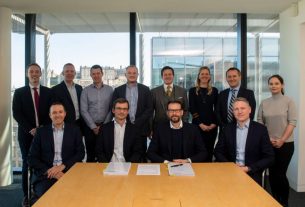Norway – DNV will lead an innovation initiative that creates a common knowledge base for ocean stakeholders to resolve aim conflicts, find synergies, and negotiate win-win solutions while protecting ocean health.
The Research Council of Norway awarded DNV and partners NOK 8.8M to develop a toolset to improve ocean stakeholder coexistence.
MARine CO-existence scenario building (MARCO) is a three-year initiative to establish a scalable system model toolbox for determining and forecasting marine coexistence between ocean users and marine ecosystems. The DNV-led innovation initiative will provide a common knowledge base for ocean stakeholders to uncover synergies, settle conflicts, and negotiate win-win solutions while protecting ocean health. The toolbox’s case study will be Norway’s Utsira Nord offshore wind licensing region.
Offshore wind developer Mainstream Renewable Power, SalMar Aker Ocean, the Norwegian Institute of Marine Research, and the Norwegian Fishermen’s Association are partners.
Blue Economy markets
Last year’s DNV Ocean’s Future report predicted that offshore wind would drive demand for ocean space for farming and energy generation by 2050. This race for space requires safe, egalitarian, and sustainable expansion.
Marine spatial planning will increasingly emphasize coexistence with nature and other human activities. The MARCO toolset helps offshore field developers and operators acquire a competitive edge by immediately understanding how future space competition will affect their risk and opportunity picture in relation to other ocean users and the marine ecosystem.
Scalability and international adaptability will be built into the toolset. Workshops and meetings will help offshore wind and aquaculture stakeholders investigate and build the toolkit to satisfy industry needs.
Knowledge-based trust
The MARCO toolset will aid offshore field development, marine spatial planning, and ecosystem management strategic planning and stakeholder dialogues. It will examine how ocean industries affect each other and the environment, as well as the cumulative effects of all industries.
The toolset will let ocean stakeholders interactively explore coexistence scenarios using spatial and temporal analyses. It will use cutting-edge marine science and ecosystem modeling.




